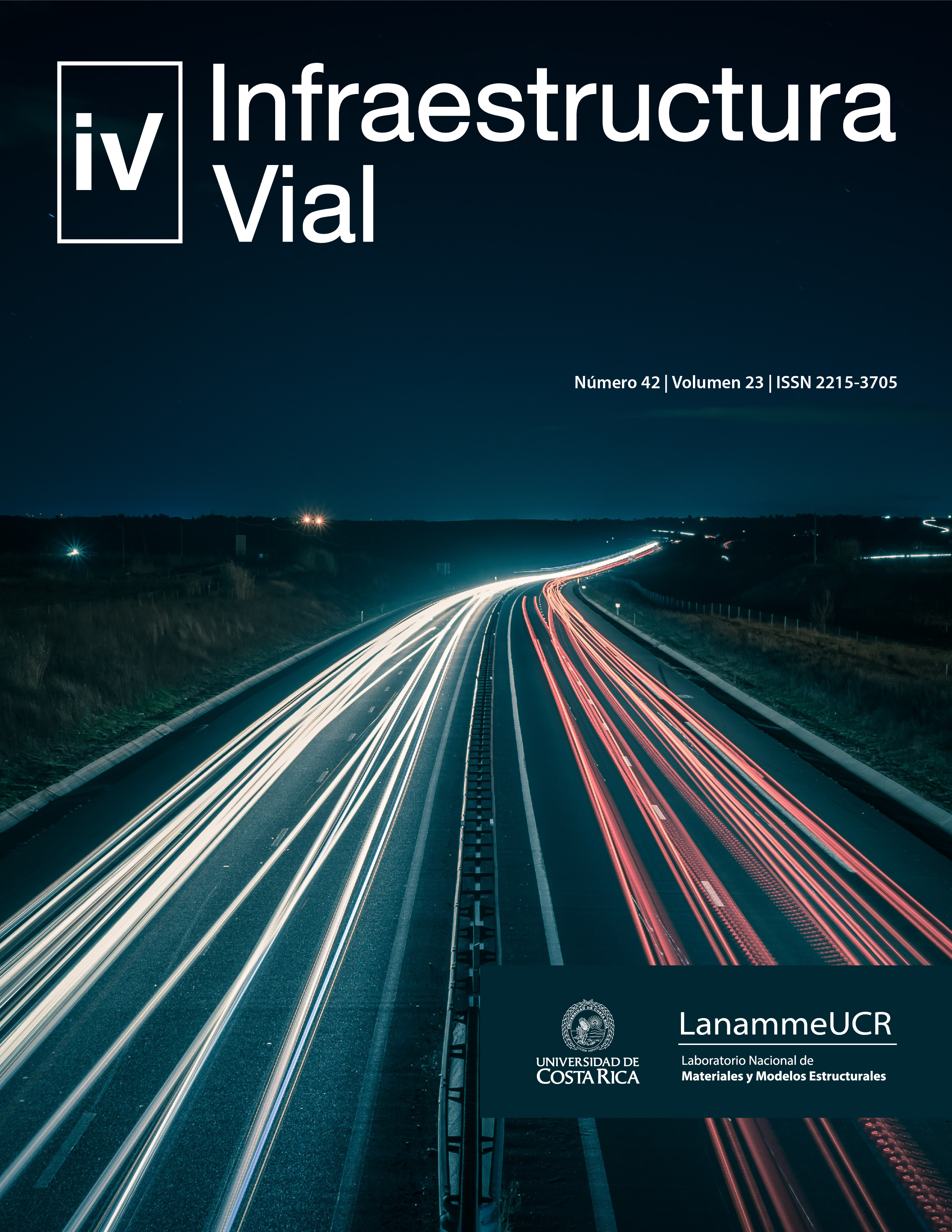Abstract
The issue of mobility is increasingly important in Costa Rica; therefore, it becomes relevant to improve the public transport system in the country. To determine which elements of the public transport system in Costa Rica affect the quality of life according to the users′ perception, it is essential to know their opinion regarding the conditions in which the service is provided. To identify the components of the structure of the public transport system in Costa Rica that have a greater impact on the quality of life of its users, the results of a survey on the effect of the use of public transport on quality of life were analysed. The data were collected by means of a questionnaire applied to workers and students at the University of Costa Rica (UCR). Structural Equation Models (SEM) were used as an analysis tool, which are a multivariate statistical tool that allows studying the relationship between latent and observed variables. The SEM allowed verifying that satisfaction with the use of public transport is a domain that affects satisfaction with the quality of life, in other words, for Costa Ricans, the perception of being satisfied with their quality of life is influenced by the perception of satisfaction they have with the use of public transport.
References
Allen, J., Muñoz, J. y Ortúzar, J. (2018). Modelling service-specific and global transit satisfaction under travel and user heterogeneity. Transportation Research Part A: Policy and Practice, 113, 509–528. DOI: 10.1016/j.tra.2018.05.009
Amat, J. (2017). Análisis de Componentes Principales (Principal Component Analysis, PCA) y t-SNE. Recuperado de https://rpubs.com/Joaquin_AR/287787
Bentler, P. (1990). Comparative fit indexes in structural models. Psychological Bulletin, 107(2), 238–246. DOI: 10.1037/0033-2909.107.2.238
Bentler, P. y Hu, L. (1999). Cutoff criteria for fit indexes in covariance structure analysis: Conventional criteria versus new alternatives. Structural Equation Modeling, 6(1), 1–55. 10.1080/10705519909540118
Busseri, M. y Sadava, S. (2011). A review of the tripartite structure of subjective well-being: implications for conceptualization, operationalization, analysis, and synthesis. Personality and social physology review, 15, 290–314. DOI: 10.1177/1088868310391271
Castro Rodríguez, L., Rodríguez Shum, S., y Picado Aguilar, G. (2018). Modelación de demanda de transporte urbano en Costa Rica, de Emme a TransCAD. Infraestructura Vial, 19(33), 45-53.
Escobedo, M., Hernández, J., Estebané, V. y Martínez, G. (2016). Modelos de ecuaciones estructurales: Características, fases, construcción, aplicación y resultados. Ciencia & Trabajo, 18(55), 16–22. DOI: 10.4067/S0718-24492016000100004
Ettema, D., Gärling, T., Olsson, L. y Friman, M. (2010). Out-of-home activities, daily travel, and subjective well-being. Transportation Research Part A: Policyand Practice, 44(9), 723–732. DOI: 10.1016/j.tra.2010.07.005
Gómez, M. (2011). Elementos de Estadística Descriptiva. Costa Rica: EUNED.
Haenlein, M. y Kaplan, A. (2004). A begginner’s guide to partial least squares analysis. Understanding statistics. 3(4), 283–297. DOI: 10.1207/s15328031us0304_4
Kline, R. (2005). Principles and practice of structural equation modeling. New York: Gilford Press.
López, J. (2020). Coeficiente de determinación (R cuadrado). Extraído el 3 de febrero, 2020 de https://economipedia.com/definiciones/r-cuadrado-coeficiente-determinacion.html
Lyubomirsky, S., Sheldon, K. y Schkade, D. (2005). Pursuing Happiness: The Architecture of Sustainable Change. Review of General Psychology, 9(2), 111–131. DOI: 10.1037/1089-2680.9.2.111
Marín, R. (2017). Ticos perciben que congestionamiento vial se agravará en el futuro. Universidad de Costa Rica. Extraído el 11 de abril, 2019 de https://www.ucr.ac.cr/noticias/2017/02/01/ticos-perciben-que-congestionamiento-vial-se-agravara-en-el-futuro.html
Mingote, J., Gálvez, M., del Pino, P. y Gutiérrez, M. D. (2009). El paciente que padece un trastorno depresivo en el trabajo. Medicina y Seguridad del Trabajo, 55(214), 41–63.
Organización Mundial de la Salud. (1996). ¿Qué es calidad de vida? Foro mundial de la salud 1996, 17, 385-387.
Ortúzar, J. y Willumsen, L. (2011). Modelling Transport. Chichester: John Wiley & Sons. DOI: 10.1002/9781119993308.
Estado de la Nación (2018). Estado de La Nación en Desarrollo Humano Sostenible. (Informe 2018). Recuperado de: https://estadonacion.or.cr/informe/?id=28797234-99af-4c53-b436-7c9a57fb1fe1
Rojas, M. y Elizondo, M. (2012). Satisfacción de vida en Costa Rica: Un enfoque de dominios de vida. Latin American Research Review, 47(1), 78-94. DOI: 10.1353/lar.2012.0019
Schimmack, U. (2008). The structure of subjective well-being. En Eid, M., y Larsen, R. (Eds.), The Science of Subjective Well-being (97–123). New York: Guilford Press.
Torres, G. (2011). Una aproximación al análisis de competitividad aplicando la técnica del modelo de ecuaciones estructurales. Extraído el 27 de enero, 2020 de http://www.tesco.edu.mx/gem/DOC/PDF/publicaciones/tescoatl/tesco_pdf_tescoatl31_4_analisiscompetitividad.pdf.
Universidad de Oxford. (2019). Satisfacción. Oxford Living Dictionaries. Extraído el 6 de mayo, 2019 de https://es.oxforddictionaries.com/definicion/satisfaccion


